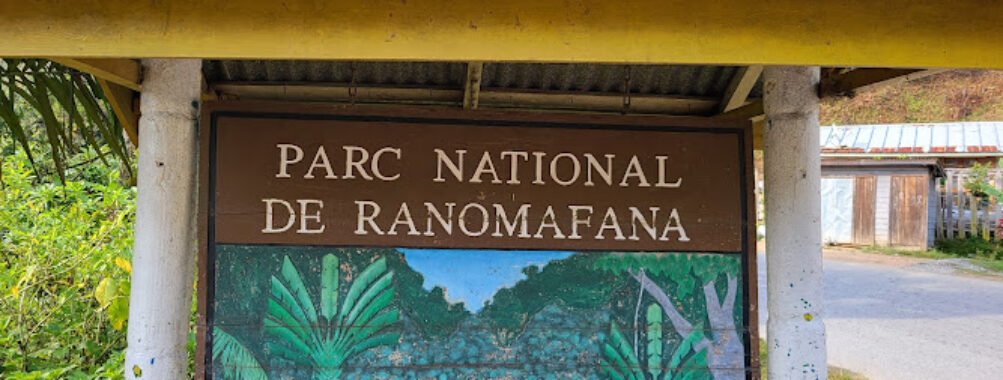
Ranomafana National Park
Table of Contents
Description
Ranomafana National Park is one of those places that sticks with you long after you’ve left – partly because of the sheer beauty of its rainforest, and partly because of the way it makes you feel like you’ve stepped into another world entirely. It’s a protected slice of Madagascar’s lush highland rainforest, brimming with wildlife you just don’t see anywhere else. Think lemurs leaping between branches, chameleons blending into mossy trunks, and birds calling from somewhere deep in the canopy. The air here feels heavy with life – damp, earthy, and alive – and if you’re anything like me, you’ll find yourself stopping mid-hike just to soak it all in.
The park is famous for its biodiversity, but it’s not just about ticking off species from a list. The experience is more personal. You’re required to go with a guide, and that’s actually a blessing – these guides grew up around here, they know the trails like the back of their hand, and they can spot a tiny leaf-tailed gecko from ten meters away. I remember my guide casually pointing out a rare golden bamboo lemur that I would have walked right past if I’d been alone.
Of course, it’s not perfect – the terrain can be muddy and slippery, and the humidity can be a bit much if you’re not used to it. Some trails are more challenging than others, and you might have to adjust your expectations if you’re hoping for a leisurely stroll. But for most travelers who come here, the magic far outweighs the inconveniences. Families with kids will find shorter, kid-friendly hikes, and there are picnic tables and restrooms at certain points, which makes things a little easier if you’re traveling with a group.
What really sets Ranomafana apart is that it feels wild yet welcoming. You’re in the middle of a UNESCO World Heritage Site, but you’re also sharing smiles with locals, hearing stories about the forest’s history, and learning how conservation here is a daily effort. It’s the kind of place that leaves you both in awe and a little humbled.
Key Features
- Home to over a dozen species of lemurs, including the rare golden bamboo lemur
- Guided tours are mandatory, ensuring expert wildlife spotting and safety
- Dense rainforest with diverse flora, from giant ferns to medicinal plants
- Over 100 bird species, many of them endemic to Madagascar
- Kid-friendly hiking routes for families
- Public restrooms and picnic tables available in designated areas
- Opportunities to spot reptiles like chameleons and leaf-tailed geckos
- Part of Madagascar’s UNESCO-listed Rainforests of the Atsinanana
- Cooler highland climate compared to coastal regions
Best Time to Visit
If you ask me, timing your visit to Ranomafana can make a huge difference. The dry season, roughly from May to October, is the sweet spot for most travelers. Trails are less muddy, the skies are clearer, and you’ll have an easier time hiking without worrying about torrential downpours. Wildlife is active year-round, but in the cooler dry months, you’re more likely to spot lemurs lounging in the open rather than huddling under leaves to avoid the rain.
That said, the rainy season (November to April) has its own charm. The forest feels even more alive, the waterfalls swell, and the greenery is impossibly lush. But you’ll need to be prepared for slippery trails, leeches (yes, they’re a thing), and sudden showers that can drench you in minutes. If you’re the adventurous type and don’t mind getting muddy, it can be a pretty magical experience. Just maybe pack an extra pair of socks.
How to Get There
Ranomafana isn’t the kind of place you just stumble upon – getting here takes a bit of planning. The park sits in Madagascar’s southeastern highlands, and the nearest major town is Fianarantsoa, about 65 kilometers away. From there, it’s a winding drive that can take a couple of hours depending on road conditions. If you’re coming from Antananarivo, the capital, it’s a much longer journey – think a full day’s drive, so breaking it up with stops along the way is a good idea.
Public transport exists, but it’s not always the most comfortable or reliable. Many travelers opt for private cars with drivers, which gives you the flexibility to stop for photos, stretch your legs, or grab a snack from a roadside stall. And trust me, those roadside snacks – fresh bananas, roasted peanuts, little fried dough balls – are worth it.
Tips for Visiting
First off, don’t underestimate the terrain. Even the easier trails can get muddy, and the rainforest floor can be uneven with roots and rocks. Good hiking shoes are a must. I once saw someone attempt a trail in flimsy sandals – they didn’t get far before turning back.
Bring a rain jacket no matter what season you visit. The weather here has a mind of its own, and a sunny morning can turn into a downpour by afternoon. Insect repellent is another essential, especially during the wetter months. If you’re into photography, a zoom lens can be a game-changer for capturing wildlife without disturbing it.
Because tours are guided, it’s worth chatting with your guide beforehand about what you’re most interested in – whether that’s lemurs, birds, plants, or just a scenic hike. They can tailor the route to match your pace and interests. And don’t be shy about asking questions; the guides here are walking encyclopedias of rainforest knowledge.
Lastly, take your time. It’s tempting to pack your schedule with as much as possible, but part of the magic of Ranomafana is slowing down and letting the forest reveal itself to you. Stand still for a moment, listen to the rustle of leaves, and you might just spot something extraordinary.
Location
Places to Stay Near Ranomafana National Park
Find and Book a Tour
Explore More Travel Guides
No reviews found! Be the first to review!